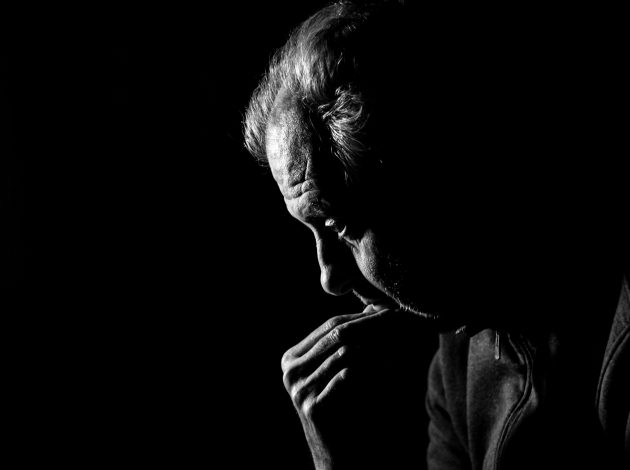Are we facing a mental health pandemic?

Over the past year, much has been written on the impacts of the COVID-19 pandemic on the mental health of children and adults.
The Office for National Statistics (ONS) has been working to monitor the effect of the last year’s events on people’s personal well-being and mental health. Two new pieces of analysis have been published today, providing early insights into self-reported depression in adults during the early 2021 lockdown, and experimental analysis of the number of depression diagnoses by GPs during the early stages of the pandemic in 2020. Here the authors Tim Vizard and Theo Joloza give the latest picture of what we know about depression and adults during the pandemic so far.
Depression is something that affects lots of adults in Great Britain, with ONS data finding an estimated one in five adults saying they experienced some form of depression during the coronavirus pandemic. This is concerning as this rate has doubled since the pre-pandemic rates.
Just as worryingly, due to restrictions and changes in health service use, people are not necessarily seeking medical help, with new data today showing that the number of GP-diagnosed cases of adult depression has fallen at the start of the pandemic. This is in line with other non-COVID-19 related conditions, which may be due to some people being reluctant to consult GPs during this time, or due to changes in the ways GP appointments were being managed during this period.
There has been a 30% decrease in all diagnoses by GPs in England during late March to the end of August 2020, with the number of depression diagnoses falling from 1,131,804 in 2019 to 863,578 (a 24% decrease). The decrease was higher among men than women and the largest fall in depression diagnoses was among those aged 45 to 54 years.
Depression accounting for greater share of diagnoses by GPs
Interestingly, cases of adult depression is making up a larger percentage of overall diagnoses by GPs than pre-pandemic. As a percentage of all diagnoses, depression in adults rose by 1.3 percentage points to 15.6% compared to the corresponding 2019 period.
All ethnic groups saw a decrease in the number of depression diagnoses, but this was not evenly spread. The White ethnic group saw the biggest drop (24% less) and the Indian ethnic group saw the lowest (13.8%). However, the Chinese ethnic group had the highest increase when looking at depression diagnoses as a percentage of all diagnoses (increase of 4 percentage points).
Experimental work based on NHS data
This insight comes from new and experimental work based on the General Practice Extraction Service (GPES) covering the pandemic period 23 March 2020 to 31 August 2020 and compares to a similar period in 2019. It is part of ONS’ ongoing drive to provide better understanding of issues by complementing our existing statistics from traditional surveys by linking up and exploring with datasets from external sources such as NHS Digital.
When looking at data from NHS Digital, we also can see a reduction in the number of adults who sought help from IAPT (Improving Access to Psychological Therapies) during the early months of the pandemic. This is a service available to adults (18+) in England to seek help for common mental health problems, like anxiety and depression. In April 2020, the number of new referrals to Psychological Therapies (IAPT) decreased by 57% (compared with April 2019). In November 2020, the number of referrals had decreased by 9% (compared with November 2019).
How were adults feeling during the first few months in 2021?
Whilst this shows a picture of the pandemic throughout 2020, a key question is whether this high level of depression has continued into 2021?
New analysis from 25,000 adults talking part in our Opinions and Lifestyle Survey during the first few months of 2021 suggests that it may indeed be the case. In June 2020, around 19% of adults reported experiencing some form of depression, a similar proportion seen later that year in November. But by the lockdown of early 2021, this has risen to 21%. The reasons for this increase are likely to be complex, with the effects of being asked to stay at home during lockdown, high levels of anxiety due to the coronavirus along with the seasonal bad weather and shorter daylight hours playing a part.
Levels were high in younger adults, a group we know has been impacted by economic factors during the pandemic. Young women had particularly high rates, with over four in ten (43%) experiencing some form of depression in the first part of 2021. Symptoms of depression during the pandemic have been more likely to affect some sections of society more, including clinically extremely vulnerable, disabled adults on lower incomes.
Further analysis in the pipeline
Our analysis paints a picture of a rising toll on mental health, with some people not necessarily accessing medical help, particularly during the start of the pandemic. As we move into the next stages of the roadmap out of lockdown, it is going to be important to look out for our own and each other’s mental health and well-being.
If you would like to find out more about looking after your mental health and well-being, visit the NHS website.

Tim Vizard, Head of Policy, Evidence and Analysis Team at the ONS

Theodore Joloza is Head of Health Statistics Transformation